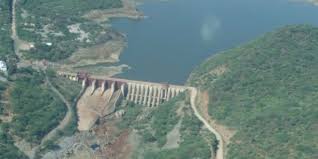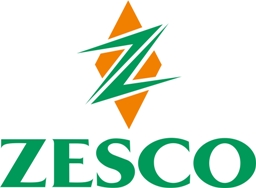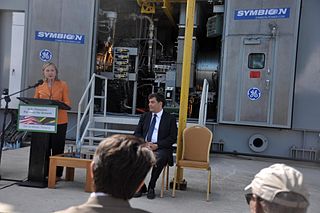
India is the third largest producer of electricity in the world. During the fiscal year (FY) 2022–23, the total electricity generation in the country was 1,844 TWh, of which 1,618 TWh was generated by utilities.

Kidatu Dam, also Kidadu Hydroelectric Power Station, is a 204 megawatts (274,000 hp) hydroelectric dam located in Kilosa District of Morogoro Region in Tanzania.
The electricity sector in Argentina constitutes the third largest power market in Latin America. It relies mostly on thermal generation and hydropower generation (36%). The prevailing natural gas-fired thermal generation is at risk due to the uncertainty about future gas supply.

ZESCO is a state-owned power company in Zambia. It is Zambia's largest power company producing about 80% of the electricity consumed in the country. ZESCO represents Zambia in the Southern African Power Pool.

The electricity sector in Sri Lanka has a national grid which is primarily powered by hydroelectric power and thermal power, with sources such as photovoltaics and wind power in early stages of deployment. Although potential sites are being identified, other power sources such as geothermal, nuclear, solar thermal and wave power are not used in the power generation process for the national grid.
Kikagati Hydroelectric Power Station, also referred to as Kikagati Power Station, is a 15.57 MW (20,880 hp) hydroelectric power station, in Uganda.
Tanzania has a wide range of energy resources in abundance, which are not yet fully exploited. These include; wood fuel, other biomass fuels, hydropower, natural gas, coal, wind, geothermal, uranium and solar.

Ubungo I Thermal Power Station, also known as the Ubungo Power Plant, is a natural gas-fueled power plant located in Ubungo of Ubungo District in Dar es Salaam Region of Tanzania. It began commercial operations on 30 July 2008 with an installed capacity of 110 megawatts (150,000 hp).

Ubungo II Thermal Power Station was an extension to the Ubungo I Power Station and began commercial operations in 2012. The power-plant is located in Ubungo of Ubungo District in Dar es Salaam Region of Tanzania. The plant has an installed capacity of 100 megawatts (130,000 hp).
Tegeta Thermal Power Station is a Tanzania Electric Supply Company owned power plant. The project began in 2006 half funded by the Tanzanian Government and the other half by The Government of the Kingdom of the Netherlands under ORET/MILIEV program.
Mtwara Thermal Power Station is a power plant owned by the Tanzania Electric Supply Company. The station has a capacity of 18 MW (24,000 hp) and uses natural gas from the Mnazi Bay gas wells in Mtwara. The station is not connected to the national grid but is instead connected to the Mtwara/Lindi mini-grid.
The Mtwara–Dar es Salaam Natural Gas Pipeline (MDNGP), is a pipeline that transports natural gas from Tanzania's natural gas fields in Mnazi Bay, Mtwara Region to Dar es Salaam.
Somanga Thermal Power Station is a 7.5 MW (10,100 hp), natural gas powered, electricity generating power station in Tanzania.
Kinyerezi II Thermal Power Station is a 240 MW (320,000 hp), natural gas powered, electricity generating power station in Tanzania.
Kinyerezi I Thermal Power Station, also Kinyerezi 1 Thermal Power Station or Kinyerezi 1 Gas Plant, is a 150 MW (200,000 hp), natural gas powered, electricity generating power station in Tanzania.
The Eastern Africa Power Pool (EAPP), is a collaborative effort by eleven countries in Eastern Africa to interconnect their electricity grids and take advantage of excess capacity within the network and facilitate trade of electric power between the members.
Mwenga Dam is a hydroelectric dam in Tanzania, located in the Iringa Region. Its installed capacity is 4 megawatts (5,400 hp). The Power plant is operated by an Independent Power Producer, Rift Valley Energy.
Ruhudji Hydroelectric Power Station is a planned 358 megawatts hydroelectric power station in Tanzania. The lead developer of this renewable energy project is Tanzania Electric Supply Company Limited (TANESCO), the government-owned electricity utility company. TANESCO plans to develop the power station, as a public private partnership (PPP) project. Work is contemporaneously ongoing, along with the development of the 222 megawatts Rumakali Hydroelectric Power Station, also located in Njombe Region.
Rumakali Hydroelectric Power Station is a 222 megawatts hydroelectric power station under construction in Tanzania. The power station is under development by a consortium comprising Tanzania Electric Supply Company Limited (TANESCO), the government-owned electricity utility company and the China Gezhouba Group. The power generated at this power station will be sold to TANESCO, for integration into the national electric grid.









